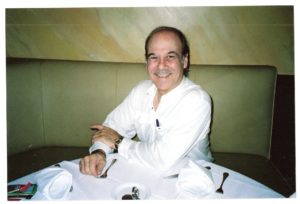A Special Moment In Time: The Five Terrible Events Of 1926
As our readers have learned in this over the past several weeks, the year 1896 was truly the crucible year for the then becoming-a-city-that-year community, one that was so tiny that, prior to Henry Flagler’s commitment to extend the railroad to the shores of Biscayne Bay and to build one of his great hotels (which would be named the Royal Palm) on the north bank of the Miami River, many, if not most, American maps did not even show a place named Miami on them. In the articles it was also noted that there were several other years of great and major importance to the life and growth of the area, but, unquestionably, the bellwether year for all of Greater Miami was 1926, for it would be in that year, as I explain to my Florida history students at both Barry and Nova Southeastern Universities, that the five terrible events that would test the mettle of the Gold Coast, particularly Dade County, which was then in the midst of the greatest boom ever seen or recorded in Florida (as well as most of the country) up until that time.
1926 began with great hopes and expectations—there was no reason for feelings to be any different!—that the year would be nothing but a continuation of the incredible “boom” that had blessed South Florida and it’s business community since shortly after World War I, as thousands upon thousands of new residents poured in and innumerable businesses were opened. At the same time, new hotels, one more grandiose (for the time) than the last, opened on the then-brand new Biscayne Boulevard in downtown Miami as well as on Collins and Washington Avenues and Ocean Drive on Miami Beach. As had been advertised by the Florida East Coast Railway since as early as 1909, Miami (and its environs) was truly “The Magic City.”
The first of the five terrible events of 1926 began early in January of that year when the huge four-masted Danish schooner, the 241-foot Prinz Valdemar, up until that time the largest vessel ever to enter Miami’s harbor (which was hard by Biscayne Boulevard, extending from just north of where the new Bayfront Park had been built, beginning at Fifth Street and running to Northeast Thirteenth Street, with the FEC serving Piers 4 and 5 and the Miami Municipal Railway, built to connect to the just having come into Miami Seaboard Air Line Railway, serving Piers 1, 2 and 3, the numbers beginning at the north end of the port) was, according to several sources, on its way to becoming a floating hotel. Others have claimed and stated that the vessel was departing in order to continue operating as a freighter, but, regardless of which supposition was correct, the ship, on January 10th, capsized and sank at the mouth of the turning basin at the entrance to the harbor. (Eventually, after being righted, the Prinz would be positioned at the southwest corner of the port, adjacent to the Boulevard, where it would become Miami’s aquarium, long before even as much as a thought of a Seaquarium would enter the minds of the folks at Wometco.)
The sinking of the Prinz Valdemar sent ripples of concern through the area’s commercial interests as the having come into Miami in late 1925 Seaboard Railway was, at the time, so far west of town, that it was carrying an absolute minimal amount of freight. The Florida East Coast, already overburdened and in the process of completing the double tracking of its line from Jacksonville to Miami, was completely overwhelmed, and within just a few weeks of the Valdemar disaster, with every siding completely filled between Jacksonville and Key West, and without room for a single freight car anywhere on the railroad (the only way that a freight car could come in was if an empty one was moved out), the FEC had no choice but to embargo itself: no freight would be carried south of Jacksonville except for food and medicine without a letter of authorization from the railroad’s vice president and general manager, Harry N. Rodenbaugh.
But as bad as those two events were, the next three, culminating with the September 17th and 18th 1926 hurricane, would be the harbinger of the great Depression that would begin in the rest of the country in 1929 and would put Miami—and south Florida—into a business decline that would last until the mid-1930s. “The rest of the story” follows in the coming columns.
[si-contact-form form=’2′]


